We use cookies to help provide you with the best possible online experience.
By using this site, you agree that we may store and access cookies on your device. Cookie policy.
Cookie settings.
Functional Cookies
Functional Cookies are enabled by default at all times so that we can save your preferences for cookie settings and ensure site works and delivers best experience.
3rd Party Cookies
This website uses Google Analytics to collect anonymous information such as the number of visitors to the site, and the most popular pages.
Keeping this cookie enabled helps us to improve our website.

Patient Participation Group
Our Patient Participation Group (PPG) meets to provide a forum for discussion about the practice.
News & Updates from the Practice and PPG
Help shape decisions on who can request access to patient data
The NHS Secure Data Environment (SDE) Network is inviting members of the public to help shape how decisions are made on who can be approved to request access to data for research.
You're Invited - Wandsworth Patient Group Forum
We’d like to invite patients registered at Heathbridge Practice, Mayfield Surgery, Tudor Lodge Health Centre, and Chartfield Surgery to attend the upcoming Wandsworth Patient Group Forum:
- Meeting date: Wednesday, 10th September at 2pm
- Location: East Hill Baptist Church
This forum is a space to hear local updates, raise concerns, and share ideas to help shape healthcare services in Wandsworth.
Everyone is welcome - your voice matters.
If you'd like to attend or need more information, please contact us via this link.
Please note: the communication platform is only available during surgery opening hours.
PRIME Patient Group Meeting - Tuesday 9th December 2025
We’re pleased to invite registered patients from Heathbridge Practice, Tudor Lodge Health Centre, Mayfield Surgery, and Chartfield Surgery to our next PRIME Patient Group Meeting.
Event Details
- Date: Tuesday 9th December 2025
- Time: 10am
- Location: Coppa Club, 29 Brewhouse Lane, London SW15 2JX
- Format: In-person event only (not available online)
Guest Speaker
Mr Marc Roe, Age Well Together Service Coordinator, Age UK Wandsworth
About Age Well Together
Age UK Wandsworth has launched the Age Well Together Service, offering older residents a range of support to maintain independence, prevent decline, and reduce isolation. This service replaces the Better at Home Service and includes:
- Support transitioning home after hospital stays
- Assistance with online shopping orders
- Befriending calls and visits
- Practical help with home adaptations (e.g., key safes, grab rails, stair rails for fall prevention)
Referral Form & Details
Access the referral form and full service details
Guest Speaker
- Maria Ashley, Patient Participation Group (PPG) Member
- Topic: AI (Artificial Intelligence) for Patients
- Introduction
- What is AI and Why Should I Care?
- AI's Role in Healthcare Today: Practical Examples
- a) Diagnosis and Detection
- b) Treatment and Drug Development
- c) Impact on Daily Life
- The Benefits and Limitations: A Balanced View
- a) Key Benefits for Patients
- b) Important Limitations & The Human Role
- Conclusion
- AI is a powerful partner for your healthcare team, making care smarter and more patient-focused.
- AI helps doctors spend less time sifting through data and more time caring for you.
Important Notes
- No complimentary food or drinks will be provided.
- Meeting materials and agenda will be available digitally on our website to reduce printing and admin workload.
- Open only to registered patients of the above GP surgeries.
- AI recording tools will be used for minute-taking.
- Photos may be taken during the event. If you prefer not to be photographed, please indicate this in the attendance form.
- After the event, please share your feedback via our Event Feedback Form.
Venue Disclaimer
Coppa Club is not sponsoring this event. They have kindly allowed us to use their space at no cost. Please note this is not a private venue, so some background noise may occur.
To attend, please complete the Event Attendance Form
After the event, we’d appreciate your thoughts, please complete the event feedback form to help us plan better for the future.
Discussion Topics for Future Planning
We invite you to review the links below to spark ideas and meaningful conversation for planning our 2026 meeting:
Latest PPG Minutes
Patient Participation Group (PPG) Meeting Minutes
Date: Monday, 7th July Prepared by: Ali (Intern Student, see photo)
Attendees:
- Mary-Ellen – PPG Chair, Mayfield Surgery
- Josephine – PPG Co-chair, Heathbridge Practice
- Poh – PPG Co-chair, Heathbridge Practice
- Kuan – PRIME PPG Co-ordinator, Heathbridge Practice
- Maria, Ozlem – Heathbridge Practice
- Terry, Clair, Anton – Mayfield Surgery
- Ali – Intern Student, Heathbridge Practice
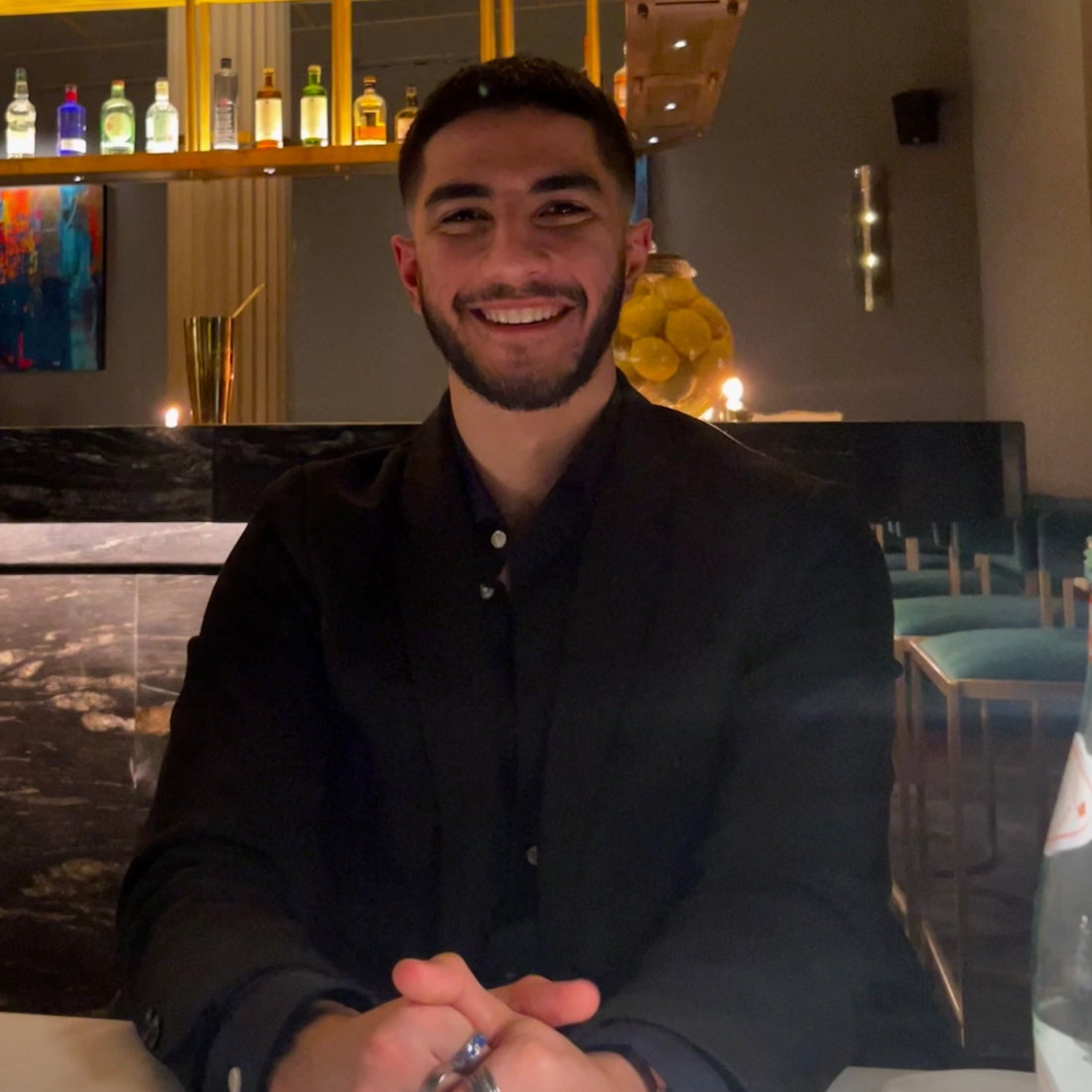
Key Discussion Points:
- Patients raised concerns about limited access to their regular GP.
- There is a fear of discrimination among some members, which may affect engagement.
- The group currently has no budget allocated for meetings.
- Plans were discussed to invite guest speakers to future sessions (beginning with the first half of meetings).
- Strategies to encourage more active participation were explored.
- A proposal was made to hold a session on loneliness in the autumn, addressing social isolation in the community.
- The group stressed the importance of each meeting having a clear purpose and defined outcomes.
- Pharmacy First was recognised as a successful initiative worth building on.
- Interest was expressed in running a session on how the NHS App works, including online triage functions.
- Suggestions were made to tailor sessions based on the digital confidence and needs of attendees.
Next Steps:
- Planning for the autumn session on loneliness.
- Exploring potential speakers for upcoming meetings.
- Developing a tailored session on NHS digital tools.
- Continuing to find ways to support and grow active membership.
Patient Participation Group (PPG) Meeting Minutes
Date: Monday, 28th August
From PPG Chairs
- Enhanced Access Service (8am to 8pm)
- Continues to support patients across the borough.
- St George’s Hospital is reporting a £95m deficit, and the ICB faces a 50% reduction in staff, raising concerns about long-term capacity.
- Wider pressures between NHS England and the Department of Health were also noted.
Pharmacy First & Extended Services
- Over 5 million cases have been managed through Pharmacy First.
- Services include:
- UTI treatment
- Mosquito bites
- Shingles
- Hypertension checks (age 40+)
- 24 HRS ABPM
- Cholesterol checks (age 40+)
- Flu vaccines
- Contraception tablets
- Repeat prescriptions
- Pharmacies now offer private consultation rooms.
- The Directory of Services (DOS) supports referrals via NHS 111, improving signposting.
- Pharmacists continue to receive ongoing clinical training.
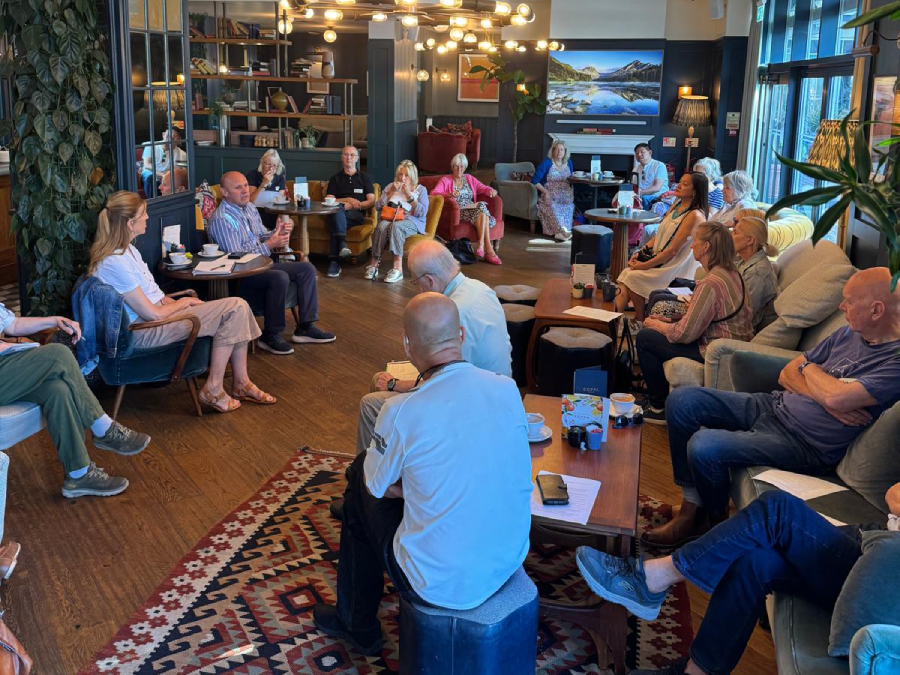
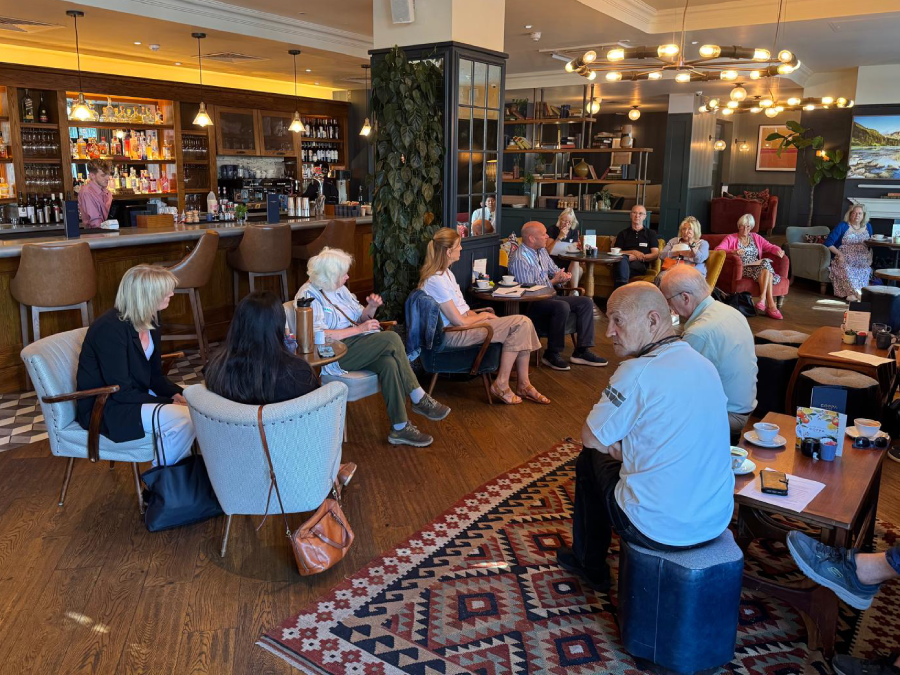
PPG Engagement at Coppa Club
- Over 20 members attended the coffee morning, supported by several volunteers.
- Patients took part in open discussions, sharing experiences and raising concerns directly.
- Positive feedback highlighted strong practice care and effective collaboration with local pharmacy Husbands.
- Attendance was mainly from older patients; under-50 participation remains limited (likely due to work/time constraints).
- The event was hosted free of charge by Coppa, showing strong community partnership.
- Mark Steed and Sarah attended as guest observers and speakers, showing external recognition of the PPG’s work.
- Special thanks to Kuan, who played a key role in making the event a success alongside the PPG Chairs.
Key Takeaways
- Enhanced Access and Pharmacy First are helping improve access to care despite wider system pressures.
- PPG events at Heathbridge provide a valuable, inclusive space for patient engagement and feedback.
- Building community spirit and patient awareness is ongoing, but there is positive momentum and external recognition.
Feedback from PPG Members
Mike
I found yesterday's meeting informative, particularly the update on Queen Mary's minor injuries unit and the Pharmacy First presentation.
One suggestion: it would be useful to have a glossary of acronyms/terms with brief explanations for non-technical readers.
Kshirja
Thank you for arranging yesterday’s meeting. It was really useful and informative.
The guest speakers were very knowledgeable and answered all the questions raised.
Everything was arranged so well — thanks again. Looking forward to the next meeting.
Maggie
I found the meeting very informative and helpful. Mark was an excellent communicator and answered queries succinctly.
One note: please ask everyone to raise their hands before speaking, as several women who did were ignored while men spoke without doing so. This would help make discussions more balanced.
Ruth
I really enjoyed the meeting and found it very interesting.
Sorry I had to dash off to a dentist appointment — it would have been nice to stay and meet more people.
Frederique
Thank you for the invite. I found Mark's presentation very useful.

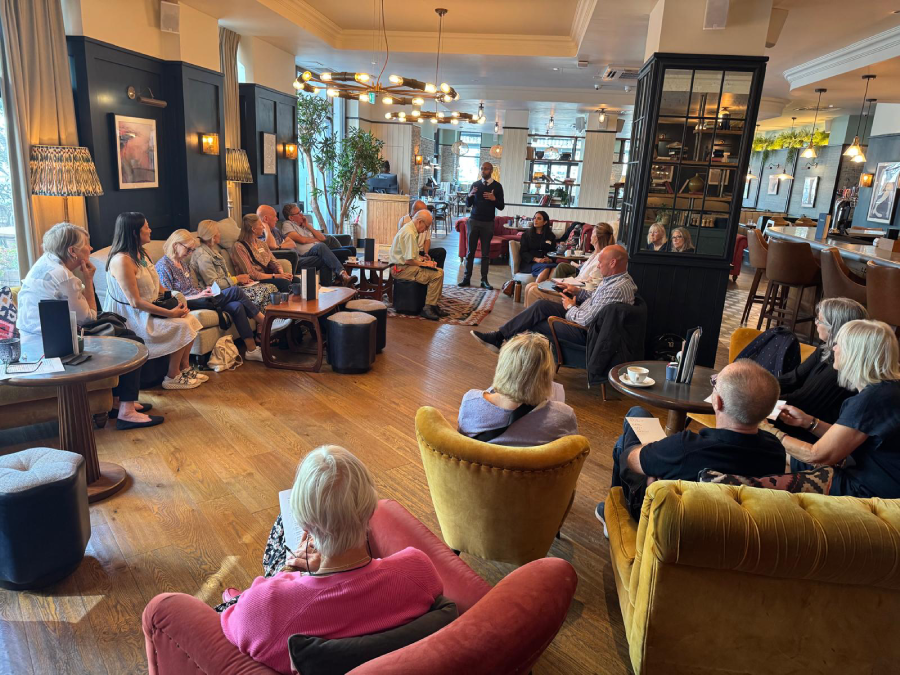
Mark Steed , Guest speaker - Meeting Summarized by AI
Wandsworth GP Federation continue contracting Tudor Lodge Health Centre to deliver GP and wound care services. St. Georges Hospital currently provides the Extended Practitioner (EP) service, which covers minor injuries. However, due to national financial requirements and population demand at the SGH site in Tooting, this service may be withdrawn from next year, but it is the intention of SWL ICB that GP and wound care services will continue as usual.
There has been some confusion in reports and press releases, which generally focuses on what may be withdrawn but not on what will remain or what might replace it. Local GPs and PCN Clinical Directors have raised concerns with senior executives at the ICB regarding what will replace St. George’s contribution.
Discussions are ongoing with all stakeholders. We are also engaging with PCN GP partners in Wandsworth (who use Queen Mary’s) to identify resources that could fill any potential gap. The ICB plan is for patients to experience minimal disruption, although only GP and wound care services are guaranteed to continue at this stage.
Queen Mary’s has faced long-standing access issues. For example, a patient reported cutting their hand and being told they should have booked an appointment the previous day, which is not practical for urgent injuries. Patients are sometimes turned away and directed to other hospitals. These problems are ongoing, and work is being done to identify gaps and potential solutions.
While some issues are beyond the Wandsworth GP Federation remit, we are trying to address as many as possible within the available resources. The focus is on working with system partners and funding bodies to mitigate service gaps.
During the meeting, a patient praised their practice but raised concerns about blood test results. Blood samples taken at the practice are sent to St. George’s phlebotomy for analysis, and results are then returned to the GP before discussion with the patient. Difficulties arise because NHS systems do not always communicate effectively with each other.
This lack of integration is a broader NHS issue. The government’s 10-year plan emphasizes the need for primary care, secondary care, mental health, and social care systems to communicate effectively. Work is underway on the Universal Care Plan (UCP), which will serve as a shared record, allowing all providers to access the same patient information across different services.
Although communication is not yet seamless, there have been signs of improvement, such as faster turnaround of some test results. Nevertheless, system fragmentation continues to cause delays and frustrations for both patients and clinicians.
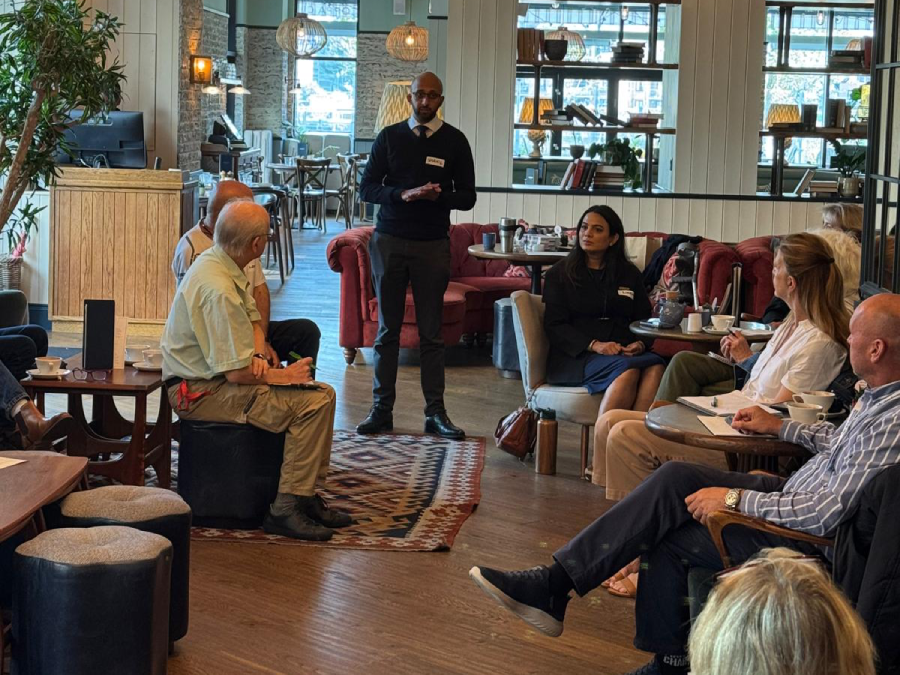
PPG Welcome Pack, Signup Form and General Information
Welcome Letter
Dear Patient,
Welcome to our PPG. The Patient Participation Group (or PPG) has been set up by the four GP practices who work together to form the PRIME (Putney & Roehampton Integrated Medical Enterprise) Network.
Our practices work very hard to ensure they provide the best care to all its patients, so with our help and collaboration we aim to work closely with our practices to help achieve their mission in providing excellent patient care. The group aims to provide a forum to give feedback on the services offered by the practices and the network and make suggestions for how they can be improved.
The PPG can meet in different ways i.e. with each other, or with a practice representative, or with a network representative. We hope that the ability to meet at different levels will encourage more representation and ideas in our groups. The PPG will feedback to the practice on the issues raised by its members. The practice will provide a platform for this information to be disseminated. In the meantime please take the time to read our terms of reference (ToR) and guide to forming a productive PPG.
We look forward to welcoming you to our next meeting. Best wishes. CHAIR OF THE PPG IN COLLABORATION WITH PRIME NETWORK
Membership & Terms of Reference
Patient Participation Group
The collaborative group shall be known as the PRIME Network Participation Group.
Purpose
The purpose of the Virtual Patient Participation Group is to establish a system of communication with registered patients in the Practices within the PCN so that their views and concerns are fed back. We also aim for our patients and VPPG members to have a better understanding and knowledge of the Practices, its staff and its viewpoint. It is hoped that by establishing a VPPG, a more diverse and regular group will emerge.
Structure
The structure is comprised of a Virtual Patient Group, with communication between the group and the Practice/Network via an online platform such as Zoom or Skype, and also via the practice.
The key points:
- The group will aim to represent the diversity of our practice population;
- To work collaboratively and positively with the practice to improve services and facilities for patients
- Create and improve two-way communication between patients, the Practice and the community it serves;
- To build a sense of partnership between Practice and patients;
- Provide constructive feedback on patient needs, concerns and interests;
- Support the Practice in good health promotions, preventative medicine and health literacy.
- Collect patient opinions and experiences to help the Practice to evaluate its services.
- Communicate to the Practice community and/or the wider community information about the Practice;
- The practice does not expect membership of the group to take up too much of our members’ time, unless members choose to give more;
- Membership of the group will have no impact on your medical care, in any way;
- Members can choose to leave the group whenever they wish.
Confidentiality and code of conduct
All members of the PPG must be made aware of the need to maintain absolute patient confidentiality at all times. Any member whose work on behalf of the PPG includes work in the practice or consulting with other patients or members of the public should sign and return a copy of the Patient Confidentiality Agreement before undertaking such activity. All PPG members must abide by the Code of Conduct.
Patient participation is
Patients working with a practice to:
- Contribute to the continuous improvement of services;
- Foster improved communication between the practice and its patients;
- To make sure that the patient voice is listened to and not necessarily always to be the voice itself;
- Help patients to take more responsibility for their health; and
- Provide practical support and help to implement change. Varied to suit local needs
- Each group determines its own activities according to the wider needs of the community and the practice itself. Based on co-operation
- VPGs work by building a relationship between the practice and its patients that breaks down barriers and shares information.
- VPGs can develop to influence the wider NHS, most notably the decisions that are made on behalf of patients about the services that are to be available to them.
Patient participation is not:
- A forum for complaints
- Clear ground rules are declared to ensure that VPG members do not use the VPG as a vehicle to resolve their own personal issues and/or complaints.
- A time-consuming activity for practice staff
- Some effort is required to get VPGs going but thereafter they should be self-organising and patient led and will often undertake activities that save the practice time.
Review
The terms of reference for both groups will be reviewed on an annual basis or if the NHS requires change to be made to the regulations.
Rules of Membership
1. You must be a registered patient of either of the following practices to be a member of the VPG:
- Chartfield Surgery
- Heathbridge Practice
- Mayfield Surgery
- Tudor Lodge Health Centre
2. Complaints and personal issues will not be addressed from this site. If you have a complaint, please ask at your reception site for a copy of the complaints procedure. If you have a personal issue relating to services provided to you as a patient, please contact the practice manager at your site who will be able to assist.
3. We do not need to meet face to face, discussions can be held online;
4. We will all be flexible, listen, ask for help and support each other;
5. We will demonstrate a commitment to delivering results, as a group;
6. Recommendations/suggestions for improvements to the Practice and/or services should be discussed and agreed within the VPPG before presenting to the Practice for comment. Suggestions will not be considered by the Practices/network until agreement has been reached;
7. The VPPG will nominate one or two representatives who will liaise with the Practice on suggestions and recommendations;
8. All views are valid and will be listened to;
9. Silence indicates agreement – speak up;
10. The purpose of the virtual group is to hear from our patients and to share constructive conversations on topics of interest. Your views and suggestions will help to inform future service improvements for all patients;
11. Honesty is welcomed, as is challenge between individuals, but we ask that your tone and language remain courteous and respectful at all times. Posts which are inflammatory or offensive will be deleted and you may be removed from the VPPG;
12. The VPPG members and practice representatives should be treated with dignity and equality. Respect towards each other’s opinions must be adhered to at all times. Members should not be made to feel their opinions and suggestions are disregarded.
13. Members should be able to openly report in confidence any behaviour that constitutes verbal abuse, bullying, harassment, unfair treatment or similar. Such behaviour will not be tolerated, and members will be removed from the group. Please note, in some cases it may also lead to your practice issuing you with a warning and could result in removal from the practice list.
14. Patients can serve on the VPPG for a fixed term of two years. Representatives of the VPPG can be voted in for a longer term by the VPPG members and Practice/PCN but their term will not exceed four years;
15. The ground rules of the VPPG may change from time to time at the discretion of the Practices/PCN;
16. It is the responsibility of the patient to inform the chair and/or practice manager that they no longer wish to sit on the group, or that they are leaving the practice. Membership to the group will then be revoked. (Please note: a monthly audit will be conducted on the patient group list to ensure that everyone within the group still maintains the right to sit on the group).
17. Important – Please note that no medical information or questions will be responded to. The information supplied to us will be used lawfully in accordance with the Data Protection Act 2018. The Data Protection Act 2018 gives you the right to know what information is held about you and sets out rules to make sure that this information is handled properly.
Why does a practice/network need a PPG?
PPGs have a key role to play as they help ensure that patients and their carers can influence their local services.
PPGs support the practice in developing services to ensure the needs and wishes of the patient population are met.
The Role of the PPG
The role of the PPG includes:
- being a critical friend to the practice
- advising the practice on patient perspective, providing an insight into the quality of services
- encouraging patients to take greater responsibility for their own health
- researching the views of those who use the practice
- participating in health promotion events
- regularly communicating with the patient population
- works in partnership with the practice, contributing to continuous improvement of services and standards of care to the patient population
Structure of the PPG Committee
A typical PPG committee comprises of a:
chair person
vice chair
secretary
treasurer (optional)
Any additional posts as deemed appropriate (created at the AGM if proposals are made)
Members can be part of the face-to-face or virtual PPGs.
Members of the PPG who cease to be registered at the practice, will cease to be a member of the practice PPG with immediate effect.
The PPG will be a representative sample of the practice population.
PPG Membership
PPG members should:
- be registered as either a patient or carer of a patient at either of the practices in PRIME
- remain objective
- work collaboratively
- listen to views of the group
- adhere to the TOR for PPG members
- commit to the 7 principles of life: Selflessness, Integrity, Objectivity, Accountability, Openness, Honesty and Leadership
What do Members do?
PPG Members:
- liaise with patients and carers, discussing concerns and comments pertinent to practice services
- champion the PPG, actively engaging with the patient population and local community
- attend and contribute to meetings
- remain objective throughout meetings
- represent the patient population effectively, expressing the views of the population objectively
What happens at meetings and when do they occur?
PPG meetings:
- take place at least quarterly
- follow an agenda (issued by the secretary)
- are a forum to discuss patient issues, concerns, suggestions etc.
- an opportunity to listen to speakers from the practice about developments or initiatives which will affect the patient population
- an opportunity for members to represent the patient population
How do PPGs support the Practice?
- The CQC expect the practice to comply with key lines of enquiry (KLOE).
- KLOE W4 asks ‘how are people who use services, those close to them and their representatives actively engaged and involved in decision-making, including through a patient reference group or PPG.
- Being able to demonstrate effectiveness in this area will support the practice an help achieve a positive outcome following a CQC inspection
Where Can I Learn More?
• The National Association for Patient Participation (N.A.P.P.) was commissioned by NHS(E) to develop a resource to help PPGs work effectively.
PPG Signup Form
If you are happy for us to contact you periodically by email please leave your details using the form linked below.
Signing up means you acknowledge that you will be allocated to your own practice’s PPG. The PRIME PPG is a network formed by four practices, and will only require attendance to the quarterly meetings if necessary and usually represented by the Chair or board members from your own group. You will continue to meet with your GP practice’s own PPG.
Wes Streeting - Letter regarding General Practice
To all general practices in England,
I am writing to thank you for the contribution you are making to improve access to, and experience of, general practice for the public.
Encouraging new figures from the Office of National Statistics (ONS) were published recently, showing a marked improvement in patient satisfaction. The Health Insight Survey results show that 96.3% of patients who tried to contact their practice in the past 28 days were successful, while the number of patients who had a poor experience of their GP practice fell from 15% to 10.9% in the same period. In May 2025, an extra 12,000 GP appointments were delivered every working day compared to May 2024. The results also show the number of patients who found it difficult to contact their practice has fallen significantly from 18.7% in July and August 2024 to 10.6% in May and June this year.
The 2025 GP Patient Survey has also shown an increase in satisfaction over the past year, with over three-quarters of patients now reporting a good overall experience with their GP practice. This comes after years of declining results in previous surveys. Our 10 Year Health Plan will build on this progress, creating a Neighbourhood Health Service that puts GPs at its heart and ensures the NHS is there for everyone, whenever they need it.
We are a government that is serious about general practice. We have spent our first year in office listening to GPs, hearing your concerns and hopes for the future of the profession, and taking action. The 2025–26 GP contract includes a funding uplift of £1.09bn alongside changes to reduce bureaucracy, improve access and increase continuity of care. This is the biggest increase in over a decade. In addition, through an investment of £82m, an extra 2,000 GPs have been hired nationwide since last October.
We remain committed to the partnership model and we will work with GPC England to secure a new substantive GP contract within this Parliament, including reviewing the Carr-Hill formula. This is about retaining and reforming the practice-based contract for general practice (GMS) and we will start working with GPC England in September to define the process and scope of the reforms. In doing so, we want to continue efforts to improve access and bring back the family doctor by improving continuity of care, which is not only good for patients but makes the job of being a GP deeply rewarding. In addition, the 10 Year Health Plan announced that from next year we will give GPs the opportunity to take on new single neighbourhood contracts, bringing together and leading multi-disciplinary teams. GPs are in the best position to do this: you have experience managing complexity and thinking about people holistically, beyond a medicalised model of care.
General practice will be the cornerstone of the Neighbourhood Health Service. The excellent GP leaders we currently have across the system, and those we will nurture and develop for future generations, will be integral in shaping and delivering it. GPs will play a key role in providing clinical leadership for integrated neighbourhood teams, and the new neighbourhood contracts and Integrated Health Organisations will deliver value to patients and taxpayers, shift resources towards prevention and into the community, and reinvest savings into transformative improvements. I firmly believe that the 10YHP represents a real opportunity for general practice to help build a better NHS for staff, patients and the public.
All this is possible through your tireless efforts to deliver the best quality care for your patients. Whilst there is still more to do to, there are clear improvements to be seen in general practice, and I commend you and your teams for the work you do every day to get the NHS back on its feet and make the NHS fit for the future.
Learn more about how healthcare is coordinated in Wandsworth
Information about the south west London integrated care Board (SWL ICB)
The South West London Integrated Care Board (SWL ICB) is the statutory NHS body responsible for planning, funding, and overseeing health and care services across six boroughs: Croydon, Kingston, Merton, Richmond upon Thames, Sutton, and Wandsworth. It was established under the Health and Care Act 2022 and became operational on 1 July 2022
How it fits into the wider system
The ICB is one part of the South West London Integrated Care System (ICS), which also includes:
- The Integrated Care Partnership (ICP): a strategic collaboration between the NHS and local councils that sets long-term priorities and health strategy
- Local “place” partnerships in each borough (Croydon, Kingston, Merton, Richmond, Sutton, Wandsworth).
- Primary Care Networks, provider collaboratives, councils, and voluntary organisations—coordinated at the neighbourhood level
Prime Wandsworth
PRIME Wandsworth refers to one of the borough’s Primary Care Networks (PCNs).
What’s PRIME?
- It’s one of nine PCNs in Wandsworth, specifically covering a group of GP practices collaborating under the name PRIME Wandsworth
- A PCN is a network of GP surgeries and community services (like mental health, pharmacy, social care) working together to deliver proactive, integrated healthcare closer to home
PRIME Wandsworth at a glance
- Practical Aim: Enhances access to services—shared clinics, extended hours, specialist team support, and coordinated care across its member practices.
- Member Practices: Includes surgeries like The Mayfield Surgery, Tudor Lodge Health Centre, Chartfield Surgery, and Heathbridge Practice. It’s led by clinical directors Dr Tom Bailey and Dr Sachin Patel
- Primary Network in Wandsworth
Typical Offerings
- Shared services (e.g. hypertension and menopause clinics).
- Extended access (evenings/Saturdays).
- Wider team approach—e.g., pharmacists, physiotherapists, social prescribers.
- Proactive care initiatives like NHS Health Checks and blood pressure monitoring.
Why it matters to you
- Your GP may invite you to a clinic run at a different surgery within the PRIME network to improve access and efficiency.
- Benefit from more flexible appointments, specialist-led services, and team-based care, without needing to go to a hospital.
- It’s part of how the NHS Long Term Plan is being delivered locally: by shifting from reactive treatment to proactive, integrated care
- Primary Network in Wandsworth
PRIME Wandsworth = a group of local GP practices working together (under a Primary Care Network) to offer better, joined‑up healthcare in Wandsworth.
Information about Healthwatch Wandsworth
Healthwatch Wandsworth is the independent, local champion for people using health and social care services in the Wandsworth area of London. It’s part of a nationwide network under Healthwatch England, established in 2013, with a mission to gather and elevate public experiences and feedback—making sure services like the NHS, social care, GPs, dentists, pharmacies, care homes, and others truly put people first.
Why It Matters
Over ten years, the organisation has collected more than 10,000 local stories and contributed to successful changes—from hospital discharge policies to transport improvements and better access for individuals with disabilities.
Become a Healthwatch Wandsworth member for free to hear about getting involved in our events and our work, and to amplify your voice and help shape health and social care in Wandsworth.
Information about the Wandsworth Patient Group Forum
The Wandsworth Patient Group Forum is a borough-wide event bringing together Patient Participation Group (PPG) Chairs and representatives from all 37 GP practices in Wandsworth.
The forum provides a valuable platform for discussing local health improvements and services. Meetings often feature guest speakers from key organisations such as South West London ICB, Healthwatch Wandsworth, and other important health bodies involved in shaping local care.
Forum Chair: Sarah Rackham
Forum Secretary: Jamie Gillespie
If you're interested in attending, please contact your practice’s PPG Chair to reserve a place.
Information about Wandsworth GP Federation
The Wandsworth GP Federation is a group of 38 local GP practices working together to improve patient care across the borough. It’s owned by the practices themselves and supports over 400,000 patients in Wandsworth.
Rather than each practice working in isolation, the Federation helps coordinate services, share resources, and offer extra support like:
- Extended access appointments (8am–8pm, 7 days a week) at local hubs
- On-site services like blood tests, ECGs, spirometry, and wound care
- Shared NHS projects to improve care for long-term conditions, frailty, and mental health
- Community-focused work, such as supporting Age UK, food banks, and wellbeing programmes
By working together, the Federation helps make GP care more accessible, consistent, and connected—especially for patients with complex or ongoing needs.
Get Involved in Shaping Local NHS Services
If you're interested in taking part in Patient Participation Group (PPG) activities, we warmly invite you to join an upcoming online event hosted by the Quality Stakeholder Reference Group (QSRG).
- Date: Tuesday, 7th October
- Time: 09:30am to 11:00am (online)
The QSRG works to keep patients and community representatives informed about local NHS services, listens to feedback on any changes, and shares key updates from across the community.
If you’d like to attend and have your voice heard, please complete the online form to request an invitation.
We’d be delighted to have you join us.
South West Division Quality Stakeholder Reference group
Terms of Reference
Role
The role of the Quality Stakeholder Reference Group (QSRG) is to update the community and patient representatives on the services offered, seek their views on any changes and to get updates from community groups and patient representatives.
Definitions
“The Trust” means Central London Community Healthcare NHS Trust
“The division” means South West Division of CLCH
1 Membership
1.1 The membership of the group will be flexible and open to new members from interested external stakeholders. Members of the Quality Stakeholder Reference Group will include:
- Healthwatch representatives
- Clinical Commissioning Group representatives
- Voluntary Sector Representatives
- Patient and Carer Representatives
- CLCH Staff and Board Members
1.2 Any clinician or administrator within the division can be invited if requested
1.3 The chair of the committee will be the Divisional Director of Nursing & Therapies. In the absence of the chair, an appointed deputy will chair the meeting.
2 Secretary
2.1 The Patient Experience Facilitator shall act as the secretary of the group.
3 Quorum
3.1 The quorum necessary for the transaction of business shall be:
- Divisional Director of Nursing & Therapies (or nominated representative)
- Patient Experience Facilitator
- Patient Representative or community group representative from at least 3 groups
4 Frequency of meetings and attendance requirements
4.1 QSRG will normally meet quarterly at appropriate times in the reporting cycle.
4.2 The Secretary of the forum shall maintain a register of attendance.
5 Notice of meetings
5.1 Unless otherwise agreed, notice of each meeting confirming the venue, time and date together with an agenda of items to be discussed, shall be forwarded to each member of the QSRG, any other person required to attend, no later than 15 working days before the date of the meeting.
5.2 Supporting papers shall be sent to members and to other attendees as appropriate, no later than 5 working days before the date of the meeting.
6 Minutes of meetings
6.1 The Secretary shall minute the proceedings of all meetings including recording the names of those present and in attendance.
6.2 Members and those present should state any conflicts of interest and the secretary should minute them accordingly.
6.3 Actions from the meeting should be circulated within 5 working days to all members of the divisional quality forum.
6.4 Minutes will be circulated with the papers for the next meeting
7 Duties
The divisional quality stakeholder reference group should carry out the following duties:
7.1 Quality
7.1.1 To review implementation of all elements of the quality strategy, as set out in the underpinning quality campaigns as follows. In particular to discuss and ensure that plans are in place to ensure that the measures for success are achieved within appropriate time scales.
7.1.2 The Quality Campaigns:
Campaign 1 A Positive Patient Experience: Enhancing the experience of our patients and their families
Campaign 2 Preventing Harm: Keeping our patients, their families and our staff safe
Campaign 3: Smart, Effective Care Ensuring patients and service users receive the best evidence-based care, every time
Campaign 4: Modelling the Way Providing innovative models of care, education and professional practice
7.2 Positive Patient Experience: Involving and learning from service users
7.2.1 To obtain assurance that the experience of users, carers and voluntary groups are central to each services work.
7.2.2 To obtain assurance that the implementation and maintenance of programmes for measuring, monitoring, and improving the experience of service users and carers are appropriate and relevant.
7.2.3 To obtain assurance that lessons learnt from involving service users are used to improve the quality of service provided.
8 Reporting responsibilities
8.1 The chair shall raise any issues to the Chief Nurse or Deputy Chief Nurses where action or improvement is needed.
9 Monitoring and Review:
9.1 Terms of reference agreed by Chief Nurse and Divisional Directors of Nursing on XXX
9.2 The terms of reference will be revised with the launch of the new Trust Quality Strategy in April 2025
South-West Division Quality Stakeholder Reference Group (QSRG)
24th June: via MS Teams
- 10.00am: Welcome and Introductions - Luisa Brown – Divisional Patient Experience Facilitator - All group members - Verbal
- 10.05am: Divisional and Trust Quality Update - John McLinden – Divisional Director of Nursing and Therapies (DDNT) - Verbal
- 10.15am: Sickle Cell Animation - “Breaking the Silence” - Luisa Brown – Divisional Patient Experience Facilitator - Verbal
- 10.30am: Community Nursing – “Quick Reference Guides” - Gemma Gilmore – Head of Clinical Services - Verbal
- 10.45am: Shared Governance Updates – Quality Councils within the SWD - Nicola Ireland – Shared Governance Programme Lead - Verbal
- 11.00am: Newsflash - (Members share their updates and any news of key issues affecting their external organisations.) - Stakeholder Representatives. - Verbal
- 11.15am: AOB - Feedback Form - All - Luisa Brown (Patient Experience Facilitator) - Verbal
- 11.25am: Close - Luisa Brown – Patient Experience Facilitator - Verbal
South-West Division Quality Stakeholder Reference Group – Minutes
Date: 1st of April 2025 / Time: 10am to 11.30am / Venue: MS Teams / Chair: Luisa Brown
Attendees:
Luisa Brown (LB- CLCH NHS Trust), Gemma Allen (GA- CLCH NHS Trust), Campbell Flack (CF -CLCH NHS Trust), Emma Tomlin (ET– CLCH NHS Trust), Sheena Rufus (SR – CLCH NHS Trust), Amelia Russell (AR – CLCH NHS Trust), Charlotte Allen (CA Age UK Wandsworth), Edwina Curtis (EC – SW London NHS), Ruth Lister ( RL - Patient Representative Heath bridge GP Surgery) , Shaleen Simmonds (SS – St Georges NHS Trust), Eglionna Treanor (ET – Wandsworth Carers), Liz Harrington (LH – Patient Representative heath bridge GP Surgery), Senia Dedić (SD – Women of Wandsworth), Dave Curtis (DC – Healthwatch Merton)
Apologies:
John Mclinden (JMc- CLCH NHS Trust), Kuan Peng (KP – Heathbridge Practice), Alan Kummer (AK- Patient representative), Paul Scharakowski (PS - Alzheimer’s UK), Beau Fadahunsi (BF – Merton Connected), Hayley Conyers (HC – Spectra London UK), Gemma Ayres (GA – Alzheimer’s UK)
1. Welcome and Introductions.
- All attendees welcomed to the meeting. Introductions made.
2. Divisional & Quality Trust Updates for the South-West Division by the Divisional Director of Nursing & Therapies.
Gemma Allen presented (Divisional Clinical Quality Lead).
GA provided an update on various quality improvement projects across the Southwest Division, including the Merton Community nursing team's work with the transforming wound care programme, the development of quick reference guides for community nurses, and the school nurses' asthma-related project.
Wound Care Programme: The Merton Community nursing team has been working with the transforming wound care programme, which aligns with the National Wound Care Strategy. The independent evaluation results have been positive for patients, sustainability, and workforce impact.
Quick Reference Guides: Quick reference guides have been developed for community nurses to provide easy access to key support documents, even in areas without internet connectivity. This initiative has been well-received and showcased at the Quality Forum.
Asthma Project: School nurses in Merton have been involved in an asthma-related project with the local authority, focusing on the impact of air quality on asthma symptoms. An animation has been produced to educate on air pollution's effects on children's asthma, and training is being provided to schools.
Insulin Self-Administration: A patient leaflet has been co-produced with patients to support self-administration of insulin. The leaflet, developed by community nurses in Wandsworth, has received positive feedback for its accessible language and useful information.
Catheter Pathways: A trust-wide catheter review is being led by 1S, in collaboration with NHS 111 and Saint George's, to reduce hospital attendances due to catheter problems by supporting care in the community. The project is exploring available technology to aid this effort.
- SS requested to share the community nursing guide with the C RCH community team for the sickle cell project, and Gemma agreed to check with colleagues and share the guide.
- NHS Volunteer Responders: AR explained the NHS volunteer responders service, which offers check-in and chat or companionship calls for patients experiencing loneliness. She also mentioned that patients, family members, and staff can refer individuals to the service. The service provides two options: check-in and chat, which may involve different volunteers calling daily, and companionship calls, where a consistent volunteer calls one to three times a week over six weeks.
EC Just to say thank you very much, Gemma, wide breadth of innovative work that's really meeting the needs of the population. So, thank you. If there's anything we can do around supporting with comms, particularly around the asthma video or you know anything, please let us know and we can liaise with the comms in our teams around sharing that more widely.
ET Sounds brilliant. So, we have a newsletter, so if you could send me some information and get, we can help get the information out there.
CA Yeah, also the information would be great because obviously we have a befriending service, which is face to face. But we do have people that we can't always support, and we have a long waiting list. So, if somebody would like telephone friending, that would be handy for us to know about as well.
3. Wandsworth Discharge to Assess and Maximising Independence Services
Patient Story
LB shared a powerful patient story about Mrs. A, a 92-year-old patient who benefited from the collaboration between the discharge to assess team and the maximising independence service. The story highlighted the importance of teamwork, patient engagement, and self-management in improving recovery outcomes.
The discharge to assess (D2A) team, particularly a therapist named Name, played a crucial role in Mrs. A's rehabilitation. Despite initial doubts from hospital staff, the D2A team provided extended therapy, which significantly improved Mrs. A's mobility and quality of life.
Mrs. A's family, including her daughter and brother, were actively involved in her care plan. They advocated for her rehabilitation and worked closely with the D2A team to support her recovery at home, avoiding further hospitalizations and pressure sores.
With the support of the D2A team, Mrs. A regained her independence, improved her mobility, and avoided further health complications. The story emphasized the importance of personalized care, effective teamwork, and listening to both patients and their families.
GA and ET provided positive feedback on the patient story, emphasizing the importance of including patients and their families in care planning and goal setting. They also inquired about the multidisciplinary teams involved in the discharge to assess and maximising independence services.
GA and ET praised the patient story, highlighting it as a demonstration of effective teamwork and the importance of including patients and their families in care planning and goal setting.
ET inquired about the skill mix of clinicians in the discharge to assess (D2A) and maximising independence (MI) teams.
CF explained that the teams include physiotherapists, occupational therapists, rehab assistants, and speech and language therapists.
4. New Service Model for Sexual Health:
ET presented the new service model for Southwest London Sexual Health, which includes a five-day-a-week schedule with one nurse-delivered care day. She discussed the benefits of the model, such as maintaining Level 3 care and improving patient experience.
CLCH has delivered integrated sexual health services in Southwest London since October 2017. The service initially covered Merton and later expanded to Wandsworth and Richmond. The contract is with local authorities, and services are open access.
Due to financial constraints, the bid for the new contract was withdrawn in February 2025. After negotiations, a two-year contract fitting the financial envelope was agreed upon, ensuring continued high-quality care.
The new service model, effective from January 2025, includes a five-day-a-week schedule with one nurse-delivered care day on Wednesdays. This model maintains Level 3 care and aims to improve patient experience by optimizing staff schedules and service delivery.
The model allows for better skill mix, increased Level 3 appointments, and more robust workforce planning. Challenges include ensuring appropriate nurse prescribing and managing patient triage to match the right patients with the right appointments.
Efforts to improve patient experience include staged walk-in services to reduce waiting times and online booking for specific services. The goal is to provide a seamless and efficient patient journey while maintaining high standards of care.
GA- Thank you, Emma, I know this has been a long and complicated process and you've worked so hard as well as the team to try and find the best outcome for patients, recognising that you know the climate is changing the efficiencies need to be made. You know thinking about how to work differently. I know it seems really challenging, but there's been some positive outcomes, and I know you are making sure the workforce was supported and felt valued through and that was key.
And so yes, thank you for sharing that and for all your hard work along the way because it's been, it's been quite an undertaking.
ET -It has been quite a journey as they say, and reassuringly through all of that, you know, LB supports with our patient experience. And our patient feedback is always good. We have very high levels of patient feedback and that in some ways it makes me a little bit sad because people are just so grateful to get the care, and we get people say I've run around loads of places, and I couldn't get in. So yes, we absolutely love the high feedback, but it's sad that people are just so desperate to have received the care. Thank you so much.
LB - We received lots of comments, don't we, Emma, around a 5 star service at SWLSH and they all mention how you may have to wait for a period of time, but they're so appreciative that they've got this service on their doorsteps and I think that's so rewarding for the clinicians to know that, OK, people are having to wait, but they're happy to wait because they're just so happy that they've got that service right there on their doorstep that they can access into as they need to. Great feedback from our service users.
5. Sheena Rufus - Quality Improvement Project -
SR presented a quality improvement project for Merton Children and Young People's therapy services, aiming to develop a multi-professional pathway for children with complex health needs. The project involved service user feedback and process mapping to create a more efficient and family-centred pathway.
SR and LB emphasized the importance of involving service users in the development of the new pathway, noting that their feedback was valuable in creating a more efficient and family-centred process.
EC - I just wanted to comment, you know, it looks great. It's great that you've had that service user engagement and feedback, and you've really looked at where the kind of waste is in the system that you currently had and made it a much leaner process. And I really hope that then that's reflecting the patient feedback that you get from your pilot, so well done.
LB - Service user feedback has really playing a part with this new pathway process and I think from our new 5 borough mobilisation, it's kind of a key thing that if you have service user involvement from the very beginning all the way through it's very rich, very valuable feedback and needs to be included to gain that insight all the way through its just you know fantastic. It works well for everyone. So, it's something we try to do now throughout the Southwest Division with anything we've got going on.
Thank you for your feedback, Edwina.
GA -I mean probably just echoing Edwina's comments and like you say, LB, we've been focusing on getting more patient feedback and this is a great example of where you've really employed that. And I think it'll be really interesting to see the outcomes and the impact that it has on those families. You know, like you say, it's really recognising the family as a whole and the impact, all these multiple appointments can have and the complexities of navigating it also it's going to be good to see.
SR - I think it is quite easy to forget that actually when we're offering therapy or services to children that we forget there's a whole family around them and that they have so much to navigate. So, you know, it's been really positive Experience to do it to, you know, look at it for the reality of it, for these families.
ET - It sounds an amazing piece of work. I am just so impressed with you. Apart from the the visuals all being the presentation was beautiful, which I always like anyway. But I mean it just so demonstrates What you can do when you when you work with carers and things, and I just think you explained it beautifully and really understood, and I imagine your feedback is going to be great because people will have been really listening to so yeah, amazing bit of work.
LB - I think the feedback from our service users when we shared the new pathway with them, they were quite overwhelmed and happy to see that their thoughts and their feedback had been kind of really factored into it. And they were like, wow, you know, seeing it on there, if we can make this work, this will be making life so much easier for all of us. So, it's been very rewarding for Sheena and the team as well as for our service users. So yeah, it will be really exciting to see what the end result will be once we've finished this pilot.
And obviously do we need to do a second PDSA.
6. Newsflash – members share their updates and any news of key issues affecting their external organisations.
LB shared updates on the executive Nurse Leaders Programme award received by JMc SWD Divisional Director of Nursing & Therapies
LB shared the mobilisation of the new 5 borough hemoglobinopathy service for both Adults & Paediatrics is now live.
EC acknowledged the ongoing changes in the NHS and the uncertainty surrounding them, noting that more information is awaited.
ET - We've recently in the last year started to do some work with young carers as well. And as I said earlier, we've got a new set of which goes out electronically and in paper form, which is I think pretty unique these days. So, if you've got anything you do want to get out to carers in Wandsworth, please send it my way. Thank you.
7 AOB:
GA – Thanked all for attending. Time is very precious.
Meeting closed.
Meet the PPG Members
We have an active Patient Participation Group (PPG) who have regular meetings to discuss ways of improving patient care and services, and learn more about the running of the practice. If you have any suggestions you would like discussed, you can put them in the comments book held at reception, or write to the Practice Manager, Jay Francisco.
Mr Poh Lee
Patient Group Co-Chair, October 2022
My experience in sales and having dealt with people from diverse cultures and walks of life in my personal and working life through service.
What has taken my interest is about doing something for the local community with Heathbridge, my local practice. Promoting and creating community awareness with patients, carers, local voluntary and community groups including local Healthwatch.
Improving the communication channels with activities that support good participation encourages patient members of the practice to take greater responsibility for their own health and their family's health. Patient and carer priorities and issues.
An ongoing communication with the patient population.
Thank you for your time and consideration.

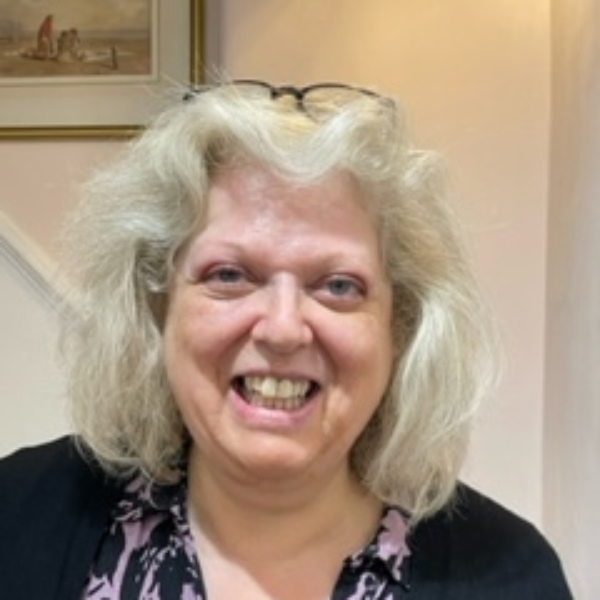
Mrs Josephine Jones
Patient Group Co-Chair, October 2022
My varied career background is that of an ex-medical student (1 year), ex-official at the Bank of England (25 years) and am currently working as a Theatre Administrator at an independent school (18 years). I was also the prime carer for my elderly mother who lived with us for 18 years.
I come from a medical family and have therefore had experience of the NHS from many directions (including my own health). I have strong organisational and communication skills.
I have been a patient of the Heathbridge Practice in its many guises for around 35 years and am happy to assist the PPG.
Mrs Mary-Ellen is the Patient Participation Group (PPG) Chair at Mayfield Surgery and is part of the PRIME Network , which includes Tudor Lodge Health Centre, Mayfield Surgery, Chartfield Surgery, and Heathbridge Practice.
The patient group meetings are held jointly across the network , with the PPG Chairs working together to plan, support, and host the sessions. This collaborative approach helps combine resources and ensures the meetings are run more efficiently.
Mrs Mary-Ellen Westwood
Patient Group Chair
My name is Mary-Ellen Westwood. My family and I have been patients at Mayfield Surgery for over 25 years. I am the new Chairman of Mayfield's Patient Participation Group. You may not have heard of a PPG. We had an active group pre-COVID, but weren't able to meet again until after this and are keen to get active again with our fellow patients.
I would like to encourage you to become involved. Our role is to act as a critical friend to the practice. We are part of a larger group of surgeries in our area. Chartfield Surgery, Healthbridge Practice and Tudor Health Centre. Our aim is the represent the diverse views of all out fellow patients and to help our doctors and the rest of the teams give us all the bes possible service.
Looking forward to meeting as many of you as possible very soon.
Mary-Ellen
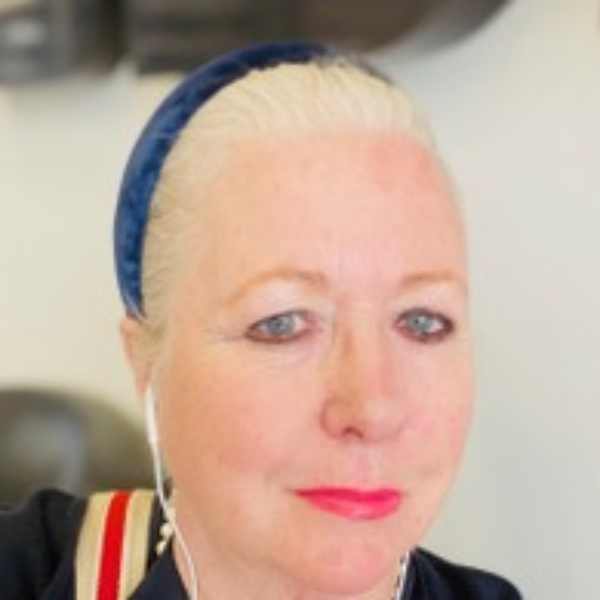

Ms. Maria Ashley
PPG Member
Maria has been a patient of the practice for a long while and has been involved in building/running communities.
I completed the following training in September 2025:
- Carer Awareness
- Confidentiality
- Customer care
- Handling difficult situations with compassion
- Homelessness
- Information Governance
- Learning disability and Autism awareness in primary care -Tier 1
- Safeguarding Adults – Level 1
- Safeguarding Children – Level 1
- Subject Access Requests
Ms Kshirja Naik
PPG Member
Ms. Naik will be delivering a few sessions and talks on cybersecurity in upcoming meetings.
Cybersecurity Engineer | Database Specialist | Incident Response Consultant
I'm a seasoned Cybersecurity Engineer with hands-on experience collaborating with corporate clients on high-stakes security projects. My work spans across database design and development, ensuring robust and scalable systems that support secure data operations. I specialize in handling critical cybersecurity incidents, often working closely with law enforcement agencies to resolve complex cases involving digital threats and breaches.
With a strong foundation in both technical architecture and investigative response, I bring a strategic edge to every project I undertake.

If you're interested in how other GP surgeries in Wandsworth run their Patient Group Meetings, please see below:
